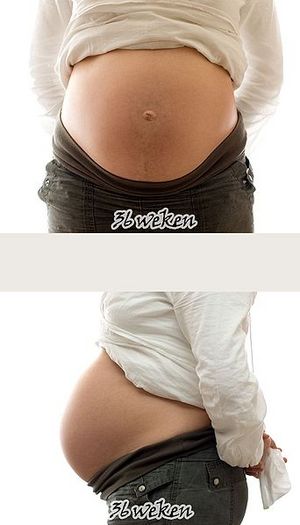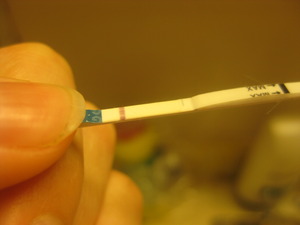Congratulations! You and your spouse have decided that you want to expand your family! While trying to conceive doesn’t sound like it should require too much effort, it can be a tricky and trying process for some couples. When my husband and I decided to start trying to get pregnant after years of trying not to, it was a lot harder than we expected. While it didn’t take us too long to get our big fat positive (BFP), it was way longer than we thought it would be. Here are some things I learned along the way.
Predicting Ovulation
It is important to figure out when you are fertile and how you should time sex in order to increase your chances of fertilization and successful implantation.
If You Have a Regular Cycle
I am a Registered Nurse, but I am going to keep the terminology very basic. Some women, such as myself, have a very regular cycle, and for the women who fall into that category, predicting ovulation is pretty simple. All you have to do is calculate the length of one full cycle (from day 1 of one period to day 1 of your next period) and then divide that by two (ex. 28 day cycle/2 = 14) and then you count that many days from the day that you start your period (ex. Start of period on October 10 + 14 days = October 24.) Now you know what day you are most likely to ovulate.
If You Have an Irregular Cycle
If you are one of those women who do not have a regular cycle then predicting ovulation can be more difficult. There is no simple mathematical equation that you can use if your cycle is irregular, but most likely your body still gives you some clues. You can monitor your cervical mucus (discharge) for an indication of where you are in your cycle. Usually, immediately after your period you will have very little discharge, indicating that you are not very fertile. The next phase in your cycle should produce discharge that is moist and creamy and cream-to-white in color. As you get closer to ovulation, your discharge should increase in volume and become thinner. Right at the peak of ovulation, discharge is usually clear and stretchy; it is often described as looking like egg whites or rubber cement. After ovulation, the amount of discharge will decrease and it will return to its thicker cream or white state. Another inexpensive way of predicting ovulation is by monitoring your Basal Body Temperature (BBT) or your temperature when you first wake up in the morning. For more information about how to monitor your BBT, check out this article on Basal Body Temperature on theBump.com. Finally, you can use an ovulation predictor kit to tell exactly when you are ovulating. Ovulation predictors measure luteinizing hormone (LH) which is found in your urine to tell you exactly when you are fertile.
When to Get Busy!
Now that you have spent all that time figuring out exactly when you ovulate, it’s important to know when you should have sex. Ovulation is usually pin pointed as one specific day in your cycle but that isn’t the only time you are fertile. You are the most fertile approximately 2-3 days prior to ovulation and about 24 hours after ovulation.
Enough About the Egg, What About the Sperm?
So we have talked extensively about the egg and the infamous female “cycle” but as we all know, baby making takes two! Here are some things to remember regarding your male counterpart when trying to conceive. First, it is recommended that you try to have sex every other day instead of every day. While I know it is hard to refrain, this is important because having sex too often can deplete your man’s sperm count. It’s also important to know that sperm can survive up to 72 hours after being released. For more information on male fertility, check out this article about Male Fertility on theBump.com.



